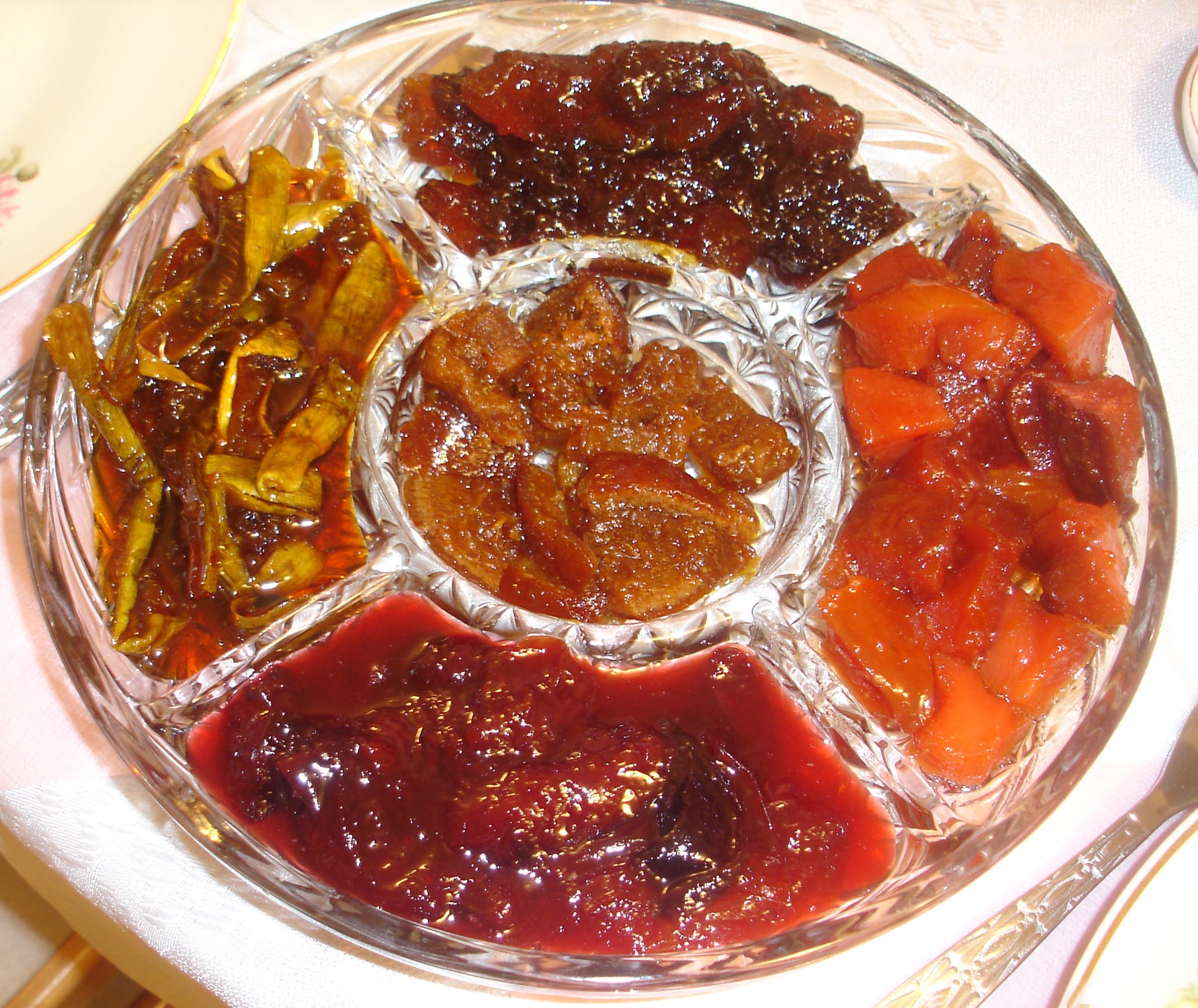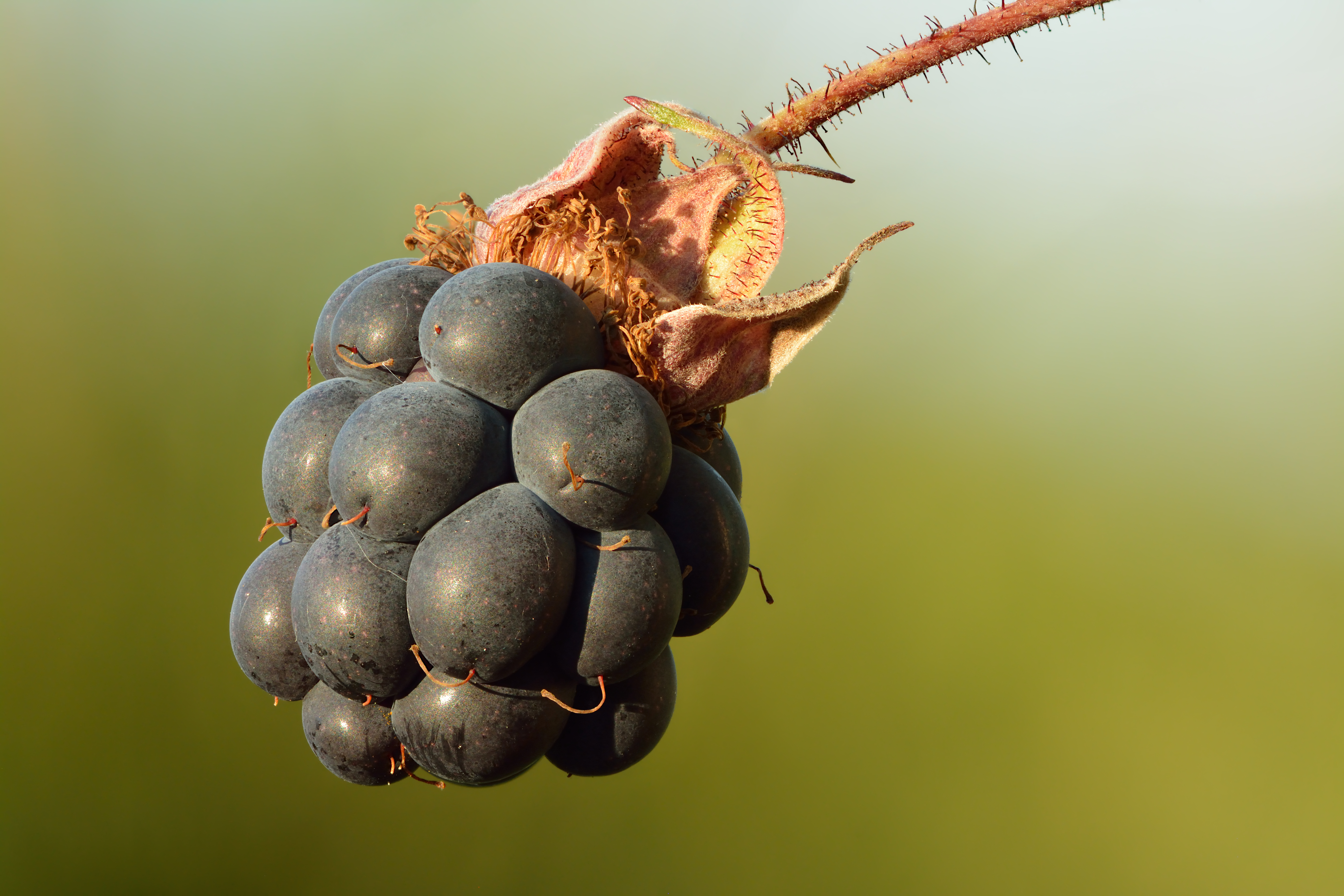|
Raspberry
The raspberry is the edible fruit of several plant species in the genus ''Rubus'' of the Rosaceae, rose family, most of which are in the subgenus ''Rubus#Modern classification, Idaeobatus''. The name also applies to these plants themselves. Raspberries are perennial with woody plant, woody stems. World production of raspberries in 2022 was 947,852 tonnes, led by Russia with 22% of the total. Raspberries are cultivated across northern Europe and North America and are consumed in various ways, including as whole fruit and in Fruit preserves, preserves, cakes, ice cream, and liqueurs. Description A raspberry is an aggregate fruit, developing from the numerous distinct carpels of a single flower. Each carpel then grows into individual drupelet, drupelets, which, taken together, form the body of a single raspberry fruit. As with blackberry, blackberries, each drupelet contains a seed. What distinguishes the raspberry from its blackberry relatives is whether or not the torus (rece ... [...More Info...] [...Related Items...] OR: [Wikipedia] [Google] [Baidu] |
Raspberry Pie
Raspberry pie is a type of pie with a raspberry filling. The primary ingredients include raspberries, sugar, lemon juice, salt, and butter. A common variant of raspberry pie is raspberry cream pies, which are raspberry pies with cream added. Raspberry pie is eaten around the world, and the specific region of origin of raspberry pie is unknown. National Raspberry Cream Pie Day is a holiday that takes place every year on August 1 in celebration of raspberry cream pies. Raspberries are plentiful that time of year in the Northern Hemisphere and people often bake raspberry pies. See also * List of pies, tarts and flans This is a list of pies, tarts and flans. A pie is a baked or fried dish which is usually made of a pastry dough casing that covers or completely contains a filling of various sweetness, sweet or Umami, savory ingredients. A tart is a baked dish con ... References Fruit pies Raspberry dishes {{pie-stub ... [...More Info...] [...Related Items...] OR: [Wikipedia] [Google] [Baidu] |
Rubus Idaeus
''Rubus idaeus'' (raspberry, also called red raspberry or occasionally European red raspberry to distinguish it from other raspberry species) is a red-fruited species of ''Rubus'' native to Europe and northern Asia and commonly cultivated in other temperate regions. Taxonomy A closely related plant in North America, sometimes regarded as the Variety (biology), variety ''Rubus idaeus'' var. ''strigosus'', is more commonly treated as a distinct species, ''Rubus strigosus'' (American red raspberry), as is done here. Red-fruited cultivated raspberries, even in North America, are generally ''Rubus idaeus'' or horticultural derivatives of hybrids of ''R. idaeus'' and ''R. strigosus;'' these plants are all addressed in the present article. Description Plants of ''Rubus idaeus'' are generally perennial plant, perennials, which bear biennial plant, biennial stems ("canes") from a perennial root system. In its first year, a new, unbranched stem ("primocane") grows vigorously to its full h ... [...More Info...] [...Related Items...] OR: [Wikipedia] [Google] [Baidu] |
Rubus Occidentalis
''Rubus occidentalis'' is a species of ''Rubus'' native to eastern North America. Its common name black raspberry is shared with black raspberry, other closely related species. Other names occasionally used include bear's eye blackberry, black cap, black cap raspberry, and scotch cap. Description ''Rubus occidentalis'' is a deciduous shrub growing to tall. The leaf, leaves are leaf shape, pinnate, with five leaflets on leaves, strong-growing stems in their first year, and three leaflets on leaves on flowering branchlets. The flowers are distinct in having long, slender sepals long, more than twice as long as the petals. The round-shaped fruit is a diameter aggregation of drupelets; it is edible, and has a high content of anthocyanins and ellagic acid. Long stems also called canes grow up to in length, usually forming an arch shape, but sometimes upright. Canes have curved, sharp thorns, while immature canes are unbranched and have a whitish bloom. The black raspberry is ... [...More Info...] [...Related Items...] OR: [Wikipedia] [Google] [Baidu] |
Fruit Preserves
Fruit preserves are preparations of fruits whose main preserving agent is sugar and sometimes acid, often stored in glass jars and used as a condiment or spread. There are many varieties of fruit preserves globally, distinguished by the method of preparation, type of fruit used, and its place in a meal. Sweet fruit preserves such as jams, jellies, and marmalades are often eaten at breakfast with bread or as an ingredient of a pastry or dessert, whereas more savory and acidic preserves made from " vegetable fruits" such as tomato, squash or zucchini, are eaten alongside savory foods such as cheese, cold meats, and curries. Techniques There are several techniques of making jam, with or without added water. One factor depends on the natural pectin content of the ingredients. When making jam with low-pectin fruits like strawberries, high-pectin fruit like orange can be added, or additional pectin in the form of pectin powder, citric acid or citrus peels. Often the fruit will b ... [...More Info...] [...Related Items...] OR: [Wikipedia] [Google] [Baidu] |
Rubus Leucodermis
''Rubus leucodermis'', also called whitebark raspberry, blackcap raspberry, or blue raspberry, is a species of ''Rubus'' native to western North America. Description ''Rubus leucodermis'' is a deciduous shrub growing to , with prickly shoots. While the crown is perennial, the canes are biennial, growing vegetatively one year, flowering and fruiting the second, and then dying. As with other dark raspberries, the tips of the first-year canes (primocanes) often grow downward to the soil in the fall, and take root and form tip layers which become new plants. The leaves are pinnate, with five leaflets on the leaves' hardy stems in their first year, and three leaflets on leaves on flowering branchlets with white (and infrequently light purple) flowers. The fruit is diameter, red to reddish-purple at first, turning dark purple to nearly black when ripe. The edible fruit has high contents of anthocyanins and ellagic acid. ''R. leucodermis'' is similar to the eastern black raspberry ( ... [...More Info...] [...Related Items...] OR: [Wikipedia] [Google] [Baidu] |
Rubus Gunnianus
''Rubus gunnianus'' is a species in the genus ''Rubus'' of the family Rosaceae. It is a small herb that grows in subalpine and alpine habitats above 900m throughout Tasmania, and bears edible fruit. It is commonly known as the native strawberry or Tasmanian alpine raspberry. Taxonomy The name ''gunnianus'' comes from the botanist Ronald Campbell Gunn. Gunn worked closely with Ronald Lawrence; who knew British botanist Joseph Hooker. The authority of this species was named after Hooker. Gunn travelled around Tasmania, collecting specimens and sending them back for Hooker's book ''"Introduction to Flora Tasmaniae"''. Over 50 Tasmanian plant species gained Gunn's name, but a number of names would have since been changed over the years. Description ''Rubus gunnianus'' is the smallest of all the species in the family Rosaceae. It grows as a small, prostrate herb in alpine habitats throughout Tasmania. When mature, the plant can spread by sending out runners to make the plant large ... [...More Info...] [...Related Items...] OR: [Wikipedia] [Google] [Baidu] |
Rubus Subg
''Rubus'' is a large and diverse genus of flowering plants in the rose family, Rosaceae, subfamily Rosoideae, most commonly known as brambles. Fruits of various species are known as raspberries, blackberries, dewberries, and bristleberries. It is a diverse genus, with the estimated number of ''Rubus'' species varying from 250 to over 1000, found across all continents except Antarctica. Most of these plants have woody stems with prickles like roses; spines, bristles, and gland-tipped hairs are also common in the genus. The ''Rubus'' fruit, sometimes called a bramble fruit, is an aggregate of drupelets. The term ''cane fruit'' or ''cane berry'' applies to any ''Rubus'' species or hybrid which is commonly grown with supports such as wires or canes, including raspberries, blackberries, and hybrids such as loganberry, boysenberry, marionberry and tayberry. The stems of such plants are also referred to as ''canes''. Description Bramble bushes typically grow as shrubs (though a ... [...More Info...] [...Related Items...] OR: [Wikipedia] [Google] [Baidu] |
Aggregate Fruit
A raspberry_beetle.html" ;"title="raspberry fruit (shown with a raspberry beetle">raspberry fruit (shown with a raspberry beetle larva) is an aggregate fruit, an aggregate of drupelets. image:Aquilegia vulgaris 004.JPG, The fruit of an ''Aquilegia'' flower is one fruit that forms from several ovaries of one flower, and it is an aggregate of follicles. However, because the follicles are not fused to one another, it is not considered an aggregate fruit. An aggregate fruit or etaerio () is a fruit that develops from the merger of several ovaries that were separated in a single flower. In contrast, a ''simple fruit'' develops from one ovary, and a ''multiple fruit'' develops from multiple flowers. In languages other than English, the meanings of "aggregate" and "multiple" fruit are reversed, so that "aggregate" fruits merge several flowers. The differences in meaning are due to a reversal in the terminology by John Lindley, which has been followed by most English-language authors. Not ... [...More Info...] [...Related Items...] OR: [Wikipedia] [Google] [Baidu] |
Receptacle (botany)
In botany, the receptacle refers to vegetative tissues near the end of reproductive stems that are situated below or encase the reproductive organs. Angiosperms In angiosperms, the receptacle or torus (an older term is thalamus, as in Thalamiflorae) is the thickened part of a stem (pedicel) from which the flower organs grow. In some accessory fruits, for example the pome and strawberry, the receptacle gives rise to the edible part of the fruit. The fruit of ''Rubus'' species is a cluster of drupelets on top of a conical receptacle. When a raspberry is picked, the receptacle separates from the fruit, but in blackberries, it remains attached to the fruit. — In the daisy family (Compositae or Asteraceae), small individual flowers are arranged on a round or dome-like structure that is also called receptacle. Algae and bryophyta In phycology, receptacles occur at the ends of branches of algae mainly in the brown algae Brown algae (: alga) are a large group of multice ... [...More Info...] [...Related Items...] OR: [Wikipedia] [Google] [Baidu] |
Rubus
''Rubus'' is a large and diverse genus of flowering plants in the rose family, Rosaceae, subfamily Rosoideae, most commonly known as brambles. Fruits of various species are known as raspberries, blackberries, dewberries, and bristleberries. It is a diverse genus, with the estimated number of ''Rubus'' species varying from 250 to over 1000, found across all continents except Antarctica. Most of these plants have woody stems with prickles like roses; spines, bristles, and gland-tipped hairs are also common in the genus. The ''Rubus'' fruit, sometimes called a bramble fruit, is an aggregate of drupelets. The term ''cane fruit'' or ''cane berry'' applies to any ''Rubus'' species or hybrid which is commonly grown with supports such as wires or canes, including raspberries, blackberries, and hybrids such as loganberry, boysenberry, marionberry and tayberry. The stems of such plants are also referred to as ''canes''. Description Bramble bushes typically grow as shrubs (t ... [...More Info...] [...Related Items...] OR: [Wikipedia] [Google] [Baidu] |
Rosaceae
Rosaceae (), the rose family, is a family of flowering plants that includes 4,828 known species in 91 genera. The name is derived from the type genus '' Rosa''. The family includes herbs, shrubs, and trees. Most species are deciduous, but some are evergreen. They have a worldwide range but are most diverse in the Northern Hemisphere. Many economically important products come from the Rosaceae, including various edible fruits, such as apples, pears, quinces, apricots, plums, cherries, peaches, raspberries, blackberries, loquats, strawberries, rose hips, hawthorns, and almonds. The family also includes popular ornamental trees and shrubs, such as roses, meadowsweets, rowans, firethorns, and photinias. Among the most species-rich genera in the family are '' Alchemilla'' (270), '' Sorbus'' (260), ''Crataegus'' (260), '' Cotoneaster'' (260), '' Rubus'' (250), and ''Prunus'' (200), which contains the plums, cherries, peaches, apricots, and almonds. However, all of th ... [...More Info...] [...Related Items...] OR: [Wikipedia] [Google] [Baidu] |






